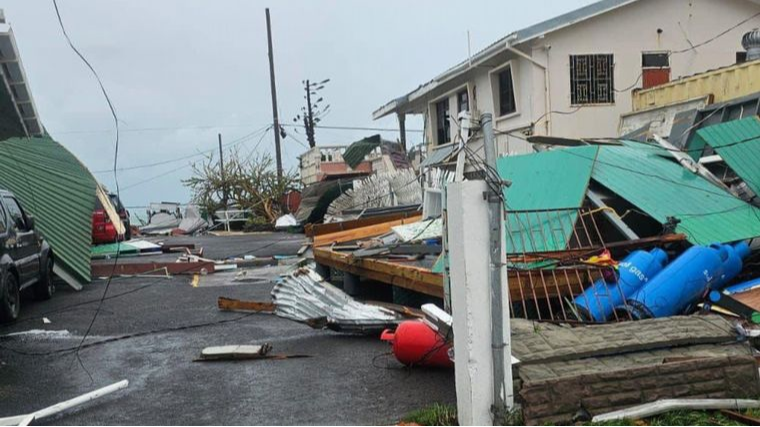
By Roberto Morejón
The hurricane season reaches its climax in September, when the strongest ones hit, but as time goes by, dangerous new developments emerge, such as Beryl, the fastest Category 5 hurricane recorded in the Atlantic.
The young Prime Minister of Grenada, Dickon Mitchell, eloquently reflected on the destruction caused by Beryl.
The gale made landfall as a category 4 on Carriacou Island and left that archipelago "flattened" in half an hour, the Premier stated moved.
But what's more, in a matter of hours, it had gone from a tropical storm to a category 5 hurricane, an unprecedented event for the start of the season in the Atlantic Ocean and the Caribbean Sea.
It was not only on the so-called Species Island where the aforementioned meteor tore off roofs, knocked down homes and electricity poles, sank boats and left floods, as damage and even deaths were also reported in Saint Vincent and the Grenadines, Barbados, Saint Lucia, Jamaica, among others.
Once again, devastation and confusion are falling on the Caribbean, a region prone to suffering these punishments, with periods of this type of storm becoming more dangerous.
The Atlantic basin, including the Atlantic Ocean, the Caribbean Sea and the Gulf of Mexico, experiences 14 named tropical storms per year, of which seven are hurricanes and three of them are major.
Experts agree that high sea surface temperatures are partly responsible for the rise and intensity of cyclones, as well as a probable change in regional climate patterns.
Although not all experts agree that climate change generates more hurricanes, consensus does seem to be gaining that the most vigorous ones are more feasible and that the associated rains gain in intensity.
There are many who emphasize that human-caused climate change is warming the oceans globally and melting ice on land, causing sea levels to rise and increasing the risk of storm surges.
These are situations that, inserted in the Caribbean, give greater connotation, since its small islands are among the most vulnerable to climate change.
This is due to the greater frequency and intensity of natural disasters, such as hurricanes and floods, and rising sea levels.
The Caribbean, today hit by Beryl, requires understanding and solidarity, especially for its small farmers, who support the now threatened food security.

